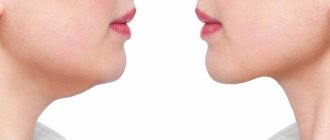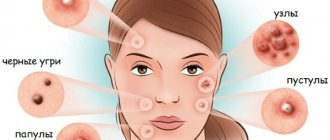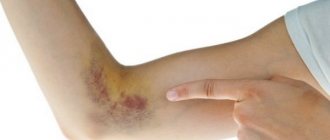Diastasis is an increase in the distance between two sections of the rectus abdominis muscle. The separation occurs at the abdominal suture (Linea Alba and Linea Semilunaris) of the midline connective tissue in the anterior abdomen.
This phenomenon can occur after pregnancy, with rapid weight gain or loss, prolonged and significant physical activity, prolonged cough or regular constipation. The formation of diastasis is promoted by congenital weakness of connective tissue (dysplasia).
Diastasis is often combined with hernias of the anterior abdominal wall of various locations, varicose veins of the lower extremities, flat feet, hemorrhoids, blurred vision and scoliosis.
Strong and prolonged tension of the abdominal muscles leads to an increase in intra-abdominal pressure, and weakness of the linea alba leads to the fact that the muscles, under the influence of the increased intra-abdominal pressure created by them, begin to diverge to the sides. The so-called “vicious circle” closes when muscle tension causes a further increase in diastasis.
During pregnancy, under the influence of the hormone relaxin, the ligaments are stretched and the muscles of the anterior abdominal wall are weakened so that the uterus, and with it the abdomen, can expand with the growth of the fetus. After childbirth, the muscles gradually recover, but the tendons may remain in their previous state and create the appearance of a belly protruding forward.
In addition to a cosmetic defect, diastasis can be dangerous for a woman’s health, since a number of mechanisms that ensure the proper functioning of intra-abdominal structures, abdominal and back muscles are disrupted, and, as a result, pelvic discomfort and prolapse of internal organs may occur .
66% of women with diastasis of the rectus abdominis muscles note the development of urinary incontinence when coughing or sneezing, and discomfort during sexual activity. Diastasis and various pelvic disorders usually go hand in hand.
| 100% of women have some degree of diastasis recti in the third trimester of pregnancy, this means that physiological diastasis cannot be avoided, it is important to monitor the recovery afterwards. |
It is important to note that for many women, rectus discrepancy persists for 6-8 weeks after giving birth, and this discrepancy may remain unchanged for up to a year after giving birth. At the same time, a discrepancy of up to 2 cm is considered a physiological norm.
There are 3 degrees of diastasis depending on the size of the discrepancy of the rectus abdominis muscles:
1st degree – 2-5 cm; 2nd degree – 5-7 cm; Grade 3 – more than 7 cm.
There are three types of diastasis depending on the location of the discrepancy:
- Above the navel;
- Below the navel;
- Mixed type (presence of muscle divergence both above and below the navel).
In 2009, a group of scientists conducted a study - using ultrasound methods, the width of the white line was measured in 150 primiparous women aged 20-45 years.
| It has been found that the average width of the linea alba can vary greatly, from 7 mm at the xiphoid process to 13 mm above the umbilicus and 8 mm below the umbilicus. |
Self-diagnosis of diastasis
If you suspect you have diastasis, we suggest you perform a self-diagnosis using video and record the results. To record, you can use the table in the infographic below or any medium convenient for you.
Diastasis is measured using three parameters:
- Divergence length
Measure how many centimeters the muscles extend up and down from the navel.
- Divergence width
How many centimeters are there between the muscles above the navel and below the navel?
- Finger depth
Evaluate how much your fingers sink when performing the test. During the recovery process, you will learn to engage the transverse abdominis muscle and the depth of immersion of your fingers during the test will become less.
During each test, observe the following aspects:
- Assess whether you experience pain in the pubic symphysis (the joint of the pubic bones).
- Try to feel the boundaries of the muscles along the middle of your abdomen and evaluate whether it is a soft tear or a clear separation of the muscles.
- See if you see a bulge or ridge.
- Listen to the sensations - do you experience discomfort in the pelvic floor area (involuntary release of urine, release of gases, air from the vagina).
| If something alarms you while performing these points, you should consult with your doctor to fully assess the condition of the abdominal cavity and/or pelvic organs before starting a cycle of exercises to correct diastasis. |
The video of the self-diagnosis test can be viewed below:
Treatment of damage
The treatment procedure for muscle sprains and tears, regardless of the circumstances of the injury, its nature and severity, is complex and includes a wide range of potentially possible measures - from conservative treatment to surgical intervention, as well as systemic rehabilitation.
Typical actions to eliminate the disease:
- Providing first aid. Performed on a pre-medical basis and aimed at minimizing the risks of developing short-term complications;
- Drug treatment . Includes the use of a number of drugs, mainly painkillers and antispasmodics;
- Surgical intervention. Surgical measures are usually prescribed for severe degrees of muscle rupture or ineffectiveness of conservative therapy;
- Rehabilitation. Aimed at restoring the functionality of soft structures after the end of the acute period of damage.
First aid
What to do if your abdominal muscles hurt as a result of a sprain or tear? The main task of providing first aid is to temporarily relieve the most unpleasant symptoms of the pathological process, prevent the development of short-term complications, as well as promptly move the victim to the nearest emergency room for diagnosis and prescription of the necessary professional therapy.
Necessary actions to provide assistance:
- Minimizing physical activity . A person needs to move as little as possible, preferably speaking in a horizontal position. Any loads, both in the abdomen and other components of the body, are strictly prohibited;
- Pain relief and spasm relief. As a basic remedy, it is rational to use cold on problematic localization. A sufficient number of cubes are wrapped in several layers of cloth or polyethylene, then applied to damaged soft structures for no more than 15 minutes to prevent severe hypothermia of the skin and muscles. After half an hour, the procedure can be repeated up to 10 times a day.
Conservative therapy
As part of conservative therapy, the following activities are carried out:
- Ensuring complete peace. For the patient, any physical activity, both active and passive, is excluded. In particularly severe cases, partial or complete immobilization is possible;
- Pain relief . Most often, non-steroidal anti-inflammatory ointments are used for stretching the abdominal muscles, analgesics, as well as regular application of cold to problem areas. As a supplement, rational use of antispasmodics. According to a special prescription from a doctor, as a rule, as part of the treatment of moderate or severe soft tissue ruptures, glucocorticosteroids, antibiotics to suppress secondary bacterial infections, as well as other groups of medications may be prescribed;
- Secondary treatment. It consists of applying warm compresses after at least 3 days after injury, prescribing local vasodilators that improve peripheral blood flow, chondroprotectors, muscle relaxants and other medications as necessary;
- Operation. It is rational only for severe ruptures or long-term ineffectiveness of conservative treatment in general.
Physiotherapy
After the end of the acute period of the pathological process and the start of positive dynamics of recovery, the specialized specialist prescribes physiotherapy. Typically they include:
- Exercise therapy gymnastics. A wide range of exercises, from the simplest and most passive to full-fledged ones without weights according to an individual scheme;
- Instrumental influence. The most typical in this context are electrophoresis, magnetic therapy, ultrasound, balneological procedures, etc.;
- Massage. It is prescribed in the later stages of rehabilitation and is aimed at improving muscle tone in localizations close to the problem.
Traditional methods
Any methods of alternative medicine can be used only as a potential addition to the basic therapy of the late rehabilitation period and only after mandatory consultation with the attending physician.
The most famous recipes:
- Onion and wormwood . Take 200 grams of onions and crushed wormwood leaves. Thoroughly mix the components into a single paste-like mass, then apply a compress based on the product to the problem area. The duration of one session is about 5 hours. You need to repeat it once a day for a week;
- Clay . Lotions based on blue or white clay are considered an effective remedy. A sufficient amount of dry material is mixed in clean water, after which it is applied to the damaged muscles until completely dry, which takes about 2 hours. The procedure can be repeated several times a day for 10 days;
- Lavender and sunflower oil. Take 50 grams of lavender flower tincture and 200 grams of sunflower oil. Mix both components and lubricate the problematic location with the resulting product. Repeat the procedure twice a day - morning and evening. The course is designed for 10-12 days.
Loads with diastasis
The first thing that comes to the mind of a woman who discovers she has diastasis is to immediately start pumping up her abs. This is a fundamentally wrong decision.
| Classic abdominal exercises not only will not have a positive effect, but can also increase the separation of the rectus abdominis muscles. |
Research suggests that isolated abdominal exercises are not an effective way to combat diastasis .
A 2013 study published in The Journal of Strength and Conditioning Research identifies the following basic isolation and compound exercises that are recommended to be avoided for diastasis:
- lifting the body, legs, both together from a supine position; power crunches lying down, “bicycle”, “scissors”;
- yoga asanas that create strong pressure on the midline of the abdomen, such as Mayurasana and the like;
- power poses that significantly increase intra-abdominal pressure - power balances on the arms, swings and kicks, jumping, push-ups;
- poses that stretch or expand the abdominal wall - deflections, variations of bridges, including on a fitball or bench for deflections , pull-ups;
- straight planks;
- long stands on hands/elbows and knees/feet, such as push-ups.
| In everyday activities, you should avoid stress that leads to an increase in intra-abdominal pressure. Therefore, you have to think about redistributing household chores for a while. |
Please note a few important points:
- Wear a postpartum wrap when carrying your baby, especially if it lasts for a long time
- Do not carry weights weighing more than 5-6 kg . When lifting objects, bend your elbows rather than holding them at arm's length:
| Right | Wrong |
- Lie down and get out of bed on your side , as during pregnancy. Sleep on your back or side.
- If you need to get up from a chair , pull in your stomach and stand up mainly using the strength of your legs.
- Maintain correct posture: do not arch in the lower back, but do not slouch either.
Babywearing can also make diastasis worse. It doesn't matter whether you carry your baby in a sling, baby carrier, baby carrier, or in your arms, as long as you're violating your posture. It is poor posture in most women that causes pain in the lower back, thoracic spine, and pubic symphysis and provokes an increase in the degree of diastasis .
The main mistake many women make is rounding their backs, with their shoulders moving forward and the pelvis also moving forward - this compensates for the weight of the child by shifting the center of gravity, but significantly harms the health of the mother. In addition, the very weight of the child leads to an increase in intra-abdominal pressure, provoking an even greater divergence of the rectus abdominis muscles.
If you experience discomfort or pain while carrying a child, or you have grade 2-3 diastasis, you should stop using a sling during rehabilitation.
| If you are just planning a pregnancy, to prevent the development of significant diastasis, you should pay attention to strengthening the abdominal muscles, pelvic floor muscles, deep back muscles and diaphragm. |
During pregnancy, this will help support the growing belly, prevent pain in the lumbar spine and prevent prolapse of the pelvic organs. It has also been noted that with good development of deep stabilizer muscles, recovery after childbirth is much faster.
What causes diastasis? Causes of abdominal muscle diastasis
If you want to correctly adjust your body restoration program in the postpartum period, you need to understand the root of the problem and understand why the spatial arrangement of muscle structures has changed.
For reference, we mention that the development of diastasis is typical not only for pregnant women, but also for people who:
adhered to incorrect technique for performing exercises with heavy weights;- have an “apple” body type and have gained a lot of weight;
- suffer from the presence of dangerous abdominal fat (visceral);
- engage in sports that involve working with heavy weights (for example, powerlifting);
- suffer from chronic constipation, as well as a prolonged and strained cough.
During pregnancy, the active production of the hormone relaxin occurs, which is responsible for spraining the ligaments of the abdominal area. In this regard, the muscular muscles of the abdominal region weaken and intra-abdominal pressure gradually increases. The superficial and deep abdominal muscle groups are stretched, and the midline alba—the connective tissue tendon into which many of these muscles are woven—increases significantly in size.
Another reason for the increase in the size of the tendon line may be a congenital predisposition to poor connective tissue tone. This disease is called “dysplasia” - the occurrence of defects in fibrous connective tissue that occurred during the period of embryonic and post-embryonic development, which is due to genetic determination. This pathology is characterized by a defective state of the structures of collagen and elastin fibers, which form the basis of connective tissue.
Below we will figure out how to get rid of diastasis after childbirth.
Surgical correction
| Abdominoplasty is a surgical method for eliminating diastasis. For this purpose, tension plasty with local tissue or non-tension plasty with a synthetic mesh endoprosthesis are used. |
Current scientific evidence and clinical experience indicate that biomechanical and physiological causes, pregnancy and childbirth can affect the fascia of the abdominal support system, leading to diastasis. But not all women with diastasis recti require surgery to restore full function.
The current clinical hypothesis is that at least one year must pass after delivery before a decision can be made about the need for surgical correction of the dystasis.
| Finally, surgical intervention can only be indicated if a multi-tasking system for correcting dystasis, including nutrition, exercise and an active lifestyle, has proven ineffective for recovery. |
Complete educational program on diastasis
In the very center of the abdomen, the so-called rectus muscle runs from top to bottom - this is what we see when we pump up cute “pack” abs in the gym.
The rectus muscle in fact consists of two mirror-like halves, separated by the linea alba - a strip of connective tissue consisting mainly of collagen.
Hormonal changes and growth of the uterus during pregnancy lead to a decrease in the tone of the white line and changes in its structure.
By the way, it is because of this that pregnant women develop a brown vertical stripe on their stomach.
This is necessary for the normal development of the fetus, which requires more and more space in the mother’s womb.
After childbirth, the softened linea alba and rectus muscle gradually return to their normal state.
With diastasis, this process slows down or stops altogether.
Between the left and right halves of the rectus muscle there remains a subcutaneous “gap” filled with connective tissue of the linea alba.
Tip: As a rule, tissue restoration after childbirth takes from six to ten weeks. Don't worry about diastasis prematurely and give your body a chance to bounce back naturally.
It is worth noting that stretching of the rectus abdominis muscles can appear not only after childbirth.
The reasons may be too much physical exercise, lifting excessive weight, diseases that lead to weakening of connective tissue (hernia, varicose veins, etc.).
Accordingly, not only women suffer from diastasis: men and children are also susceptible to this problem.
Exercises to correct diastasis
It is important to note that the approach to correcting diastasis through exercise should be gradual and regular . Our system involves gradually engaging the deep core muscles to ensure an even load. As a result, this approach leads to the closure or significant reduction of diastasis.
| You can perform a set of exercises to correct diastasis in grades 1 and 2, in the absence of hernias and no earlier than 6 months after birth by cesarean section and 1 month after natural birth (start from the first stage of exercises). |
If you have grade 3 diastasis, you should stop at the first stage of the program until it reaches at least grade 2.
The #sekta diastasis rehabilitation program is conditionally divided into two stages:
- the first stage is the formation of a physical activity regime;
- the second stage is the transition to more intense exercises.
Work on correcting diastasis begins with correcting or strengthening posture, walking, joint exercises, normalizing diet, breathing exercises, strengthening the transverse abdominal muscle and pelvic floor muscles.
Stages of pathology development
The lack of measures to treat diastasis leads to the fact that the condition of the connective tissue gradually worsens, and the disease from the initial stage, which is easily correctable, develops into advanced forms. In total, there are 3 degrees of severity of this pathology:
- I degree is characterized by stretching of the white line by no more than 5–7 cm. Immediately after childbirth, this condition is normal. But if the sprain has not decreased 1.5 months after the birth of the baby, then measures must be taken to eliminate the pathology. At this stage of the disease, a woman may experience nausea, pain in the epigastric region, discomfort while walking, and even constipation.
- Stage II involves increasing this distance to 10 cm. At this stage, it becomes noticeable that the muscular frame of the abdomen has weak tone.
- The expansion of the gap between the abdominal muscles by more than 10 cm indicates the onset of stage III diastasis. It is very dangerous to health, as the consequences can be hernias, muscle atrophy, and displacement of internal organs.
Determining the degree of diastasis depends on the distance between the abdominal muscles.
In addition to the stages of development of diastasis, there are also different forms of pathology. The white line can expand both along its entire length and only in certain areas. Exist:
- umbilical ring diastasis;
- separation of the abdominal muscles below or above the navel;
- complete diastasis (along its entire length).
Divergence of the white line can occur either in a separate section or along its entire length.
Correct posture
One of the most important, although at first glance insignificant, exercises is developing the skill of correct posture.
Over the course of some time, you will need to constantly monitor your body position: shoulders back, level above the pelvis, stomach moderately tucked, hips level, feet shoulder-width apart, toes spread for stability.
At first it will be unusual, but over time you will form the habit of standing and moving without disturbing your vertical position. Try not to tense your facial muscles, so as not to cause tension in your body. When moving your ribs and shoulders, you should not feel any discomfort in your stomach or hold your breath.
Make sure that your tailbone does not move forward and that your weight is distributed evenly without shifting to one hip - all these pelvic tilts indicate that the transverse abdominis muscle is not working. To engage the transverse muscle, pull your belly toward your lower back, concentrating on the area below your belly button.
An exercise near a wall will help you form the correct vertical position of your body: go to the wall, turn your back to it and press your heels, shins, buttocks, shoulder blades, shoulders and back of your head tightly. Having adjusted the position, perform 15-20 breathing cycles:
- On inhalation: the stomach relaxes, the ribs move to the side.
- As you exhale: we pull the stomach inward, only the abdominal muscles work, the shoulders do not move.
| Do this exercise at least 5 times a day in the first stage. It will take some time for your body to remember the correct muscle position. |
When do you need a doctor?
There is no drug treatment for diastasis. In cases where the situation cannot be corrected by gymnastics and other methods, you have to resort to the help of a surgeon.
Doctors unanimously say that if 1.5–2 months after birth the depression between the abdominal muscles has not decreased, you need to consult a doctor. Only he can make an accurate diagnosis and prevent a disease such as a hernia.
The reasons for visiting a surgeon should be:
- excessive roundness of the abdomen;
- discomfort and pain at the site of the bulge;
- pain when lifting heavy things, after long walking and physical activity.
The doctor, after performing an examination, will determine the degree of development of the disease. If necessary, he may prescribe an ultrasound.
Stage III of the disease also leaves the woman no other choice but to see a doctor, since this degree of development of the pathology can only be treated surgically.
The purpose of surgery is to strengthen the wall of the abdominal cavity. The manipulations are performed under general anesthesia. There are several types of surgery that are used in the treatment of diastasis:
- Tension plastic. Involves “tightening” the edges of the muscles to reduce the size of the linea alba. This method of solving the problem is not entirely effective, since diastasis tends to recur after some time.
- Tension-free plastic surgery using an endoprosthesis consisting of a special mesh. This technique is currently the most effective in eliminating diastasis. It is the least painful, the speed of rehabilitation is very high (usually within a day after surgery the patient is allowed to go home, and after a month he can already play sports and carry heavy things). As a rule, recurrence of diastasis after surgery does not occur. After a month, the implanted mesh becomes overgrown with connective tissue and thereby forms comprehensive protection against stretching. The endoprosthesis is placed into the body in two ways: through an incision in the navel or small punctures. The second method is more gentle. The human body recovers very quickly after surgery.
Often, with excess body weight, abdominoplasty is performed simultaneously with the elimination of diastasis, that is, the removal of fatty tissue and sagging skin in the lower abdomen.
Abdominoplasty involves removing excess fat and skin from the abdomen and tightening the muscle tissue.
Reviews
I had an abdominoplasty with suturing of the diastasis at the same time. The recovery was easy. I wore the corset-bandage for about a month, but otherwise felt great. I was discharged from the hospital after 4-5 days, when the drainage was removed.
Mrss
https://www.u-mama.ru/forum/family/health/559296/
I couldn’t do it on my own! I honestly did the exercises, but no results... After three children (the last birth was two and a half years ago, twins), I was still unable to get my stomach in order without surgery. I turned to the surgeon to remove this ugly belly for me. And although the operation is not the easiest, I decided to do it and am very pleased with the result! The seam is minimal - around the navel - through it she removed muscle separation and excess skin. Of course, after the operation I couldn’t do without a nanny and grandmother - it was a bit difficult. But there was no other way... it was necessary to recover. The only thing that bothered me (not much) was the loss of sensation at the intervention sites, but the doctor reassured me and promised that everything would be fine. Six months have passed, and indeed, I began to feel it little by little... And even if somewhere the sensitivity does not return, I’m definitely not going to suffer about this - after all, what was and what I am now is a big difference, and this more important for me.
Chocolate_ladochka
https://www.babyplan.ru/forums/topic/76565-diastaz-pryamyh-myshts-zhivota/#ixzz56jlwtwDj
I had terrible diastasis after giving birth, my abs were pumping, but my stomach was still falling out, I thought the skin was sagging, because during pregnancy I lost weight and after giving birth I weighed as much as 49 kg with a height of 174 cm. When the child was almost 3 years old, I found out about diastasis and began doing “cat” exercises, the essence of which was to retract the abdomen, plus I added leg raises on all fours with the abdomen retracted (by the way, after giving birth I could not retract anything at all, there were no muscles) and a year later My diastasis is gone! The stomach no longer falls out, the muscles have come together, however, I did the exercises at least once a day every day, and for the first 2 months, 3 times a day.
Emilia82
www.stranamam.ru
Breath
Breathing exercises help the diaphragm return to proper function after childbirth. During pregnancy, the diaphragm is pushed upward by the growing uterus and loses the ability to fully descend during breathing (inhalation phase).
The work of the thoracic diaphragm is closely related to the work of the pelvic diaphragm - they, like a vertical piston, always work together. Their well-functioning work has a beneficial effect on the functioning of all internal organs and the condition of the muscles of the anterior abdominal wall. Therefore, it is extremely important to set up this mechanism in a timely and correct manner.
To do this, you can use various breathing techniques:
1. Belly breathing.
Lie on the floor on your back, bend your knees, bring your knees and feet together, place one hand on your stomach, the other on your chest. As you inhale, gently inflate your stomach so that your hand on your stomach moves upward. As you exhale, gently lower your stomach down, pulling your pelvic floor muscles inward.
Try to prevent upward movements of the chest, controlling it with the other hand.
2. Lateral (costal) breathing.
Take a comfortable sitting position with a straight back, place your palms (all 5 fingers) on the lower ribs under the chest, point your elbows to the sides. Try “breathing into your hands” by pushing with the ribs of your palms, and feel the lateral expansion of your chest; The shoulders should remain motionless.
3. Alternating upper and lower breathing while sitting or lying down.
Take a position lying on your back, bend your knees, place your feet hip-width apart, parallel to each other.
Slowly begin to inhale, filling the stomach first and then the chest. When exhaling, push the air out first from the abdomen, then from the chest. As you exhale, additionally pull your stomach towards your lower back, direct the pubic bone towards the ribs (you can slightly twist the pelvis towards yourself and pull the pelvic muscles inward).
Diastasis after childbirth
Some women notice that, even after a long time since the birth of the child, their stomach still protrudes strongly, despite following a diet and doing exercise. This is diastasis after childbirth - the separation of the rectus abdominis muscles. As a rule, the pathology is observed in women with 2 or more children; the first pregnancy is rarely accompanied by this phenomenon.
What is diastasis recti after childbirth?
The normal position of the rectus abdominis muscles is closed; they should fit snugly against each other and are connected by a thin white line (tendon).
Diastasis is a thinning and severe stretching of the area between the rectus muscles, as a result of which they diverge over a significant distance, from 2 to 15 cm in width.
It is worth noting that the process in question always accompanies pregnancy due to the pressure of the growing fetus on the anterior abdominal wall. But when the baby is born, the rectus muscles must gradually close back, otherwise diastasis occurs.
How to identify and treat diastasis after childbirth?
The described problem can be diagnosed at an appointment with a surgeon. It’s also easy to do it yourself:
- Lie on the floor, on your back, bend your knees, place your feet completely on the floor.
- Place your fingertips in the center of the abdomen, 3-4 cm below and above the navel.
- Without straining your abs, raise your head.
If a depression forms in the middle of the abdomen where the fingers fit, a discrepancy has occurred.
Treatment of diastasis of the rectus abdominis muscles after childbirth is carried out using a set of exercises that can be performed within 2-4 weeks from the moment of discharge from the hospital:
- Lying on the floor, on your back, bend your knees. As you exhale, lift your hips and pelvis. Hold at the top point, tense your buttocks and abs. Do 10 times, 3 approaches.
In the same starting position, raise the straightened leg vertically upward. 10 times on each side.
Standing, lean your back against the wall, put your legs slightly forward so that there is about 45 degrees between them and the surface. Hold a small ball between your knees. Squat down until your thighs are parallel to the floor. Hold for 20-30 seconds. Perform 10-20 times.
A very effective bodyflex exercise is the “Koshchei belly” - lying on your back, inhale deeply and exhale fully and slowly. Without breathing, pull your stomach in as much as possible and stay in this position for as long as possible (if possible). Inhale smoothly and relax.
“Koshchei’s Belly” must be done many times. On the first day, you can start with 10 repetitions, gradually increasing their number to 50-90 per day, daily. Once the exercise is mastered in a lying position, it is recommended to perform it while sitting and then standing.
How to get rid of diastasis after childbirth and remove a sagging belly?
If the considered pathology causes not only aesthetic inconvenience, but also physical pain in the abdomen or lower back, provokes prolapse of internal organs and the formation of hernias, surgical intervention is recommended.
There are 2 types of operations:
- abdominoplasty;
- endoscopic hernioplasty.
These procedures are complex and expensive and require long rehabilitation.
View the discussion thread.
Exercises to strengthen the abdominal muscles
Inclusion of oblique abdominal muscles, lateral bends, various variations of plank pose and specially adapted training for our students, taking into account increasing load from minimal to intense.
You can choose any 3-5 exercises and start with 10 repetitions on each side.
Side plank scissors, knee on the floor
Oblique abdominal muscles, back muscles, lateral thigh muscles, arm muscles.
Starting position (IP): lie on your side, support on your elbow, elbow strictly under your shoulder, supporting leg bent at the knee, back straight.
We lift the pelvis off the floor, the body is tense, from the shoulder to the knee - one straight line. Raise the straight left leg up, then lower it to the floor and lower the pelvis into the IP.
Side plank scissors
Oblique abdominal muscles, back muscles, lateral thigh muscles, arm muscles.
IP: lie on your side, support on your elbow, elbow strictly under your shoulder, legs straight, back straight.
As you exhale, lift your pelvis off the floor and lift your upper leg as high as possible. With an inhalation, we lower it and return to the starting position. IMPORTANT: do not lean to the side, the body is as tense as possible.
Side fold
Oblique abdominal muscles.
IP: lying on your side, the lower arm lies along the body, the other hand behind the head (elbow looking to the side). Legs are straightened, in the air, parallel to the floor (but do not lie on it!).
On the count of “one”, with an exhalation, we perform twisting to the side, trying not to just bend our legs at the knees, but to raise them as high as possible, reaching with our elbows towards our knees. The supporting arm bends at the elbow during twisting. On the count of “two” we return to IP. IMPORTANT: keep your feet on the floor throughout the entire exercise. We don’t lean forward or backward.
Dynamic side plank with forearm (knee on floor)
Oblique abdominal muscles.
IP: side plank from the forearm, the elbow is clearly under the shoulder, the supporting leg is bent at the knee 90 degrees and lies on the floor, the back is straight, the pelvis is twisted, the body is one straight line.
Slowly raise and lower your pelvis, tensing your abdominal muscles. IMPORTANT: the back is always straight, raise the pelvis as high as possible, try not to touch the floor at the lowest point, stop the pelvis 1-2 cm from the floor.
How to determine the presence of diastasis
It's very simple and you can do it yourself. You need to lie down, bend your knees, you can raise them and provoke direct tension of the rectus abdominis muscle, that is, perform some kind of twisting or lifting of the body, tear off the shoulder blades from the surface on which we are lying. And feel it yourself with your fingers, slowly going down the chest. And begin to feel the distance along the navel line. If a dip is felt, this indicates the presence of diastasis. You need to monitor the depth; you shouldn’t press too hard.
What types of exercises are recommended for diastasis?
Initially, when we are just starting to work out with diastasis, we need to avoid exercises that give dynamics. First of all, you need to perform static exercises - planks, light twists, breathing must be correct. Exercises that involve lying on your back on a stability ball should be avoided. Because muscle overstretching is already taking place here. Also avoid yoga poses that stretch your abdominal muscles too much. I recommend the Vaakum exercise. This is an exercise when all the air is completely exhaled and the stomach is drawn in as much as possible.
That is, we regularly do static exercises, during which we take the position of a tense press. And at the same time we hold it for a certain period of time, return to the starting position and repeat again.
How quickly can diastasis be healed?
It depends on the degree. If it is the initial stage, then after 1.5-2 months the results will already be visible. The larger the stage, the longer the correction period will be. And so within 1 month you can see the result. This is all with high-quality work and regularity.
There are a lot of myths about diastasis...
Yes, there are a lot of myths. But you shouldn't believe in them.
- There is a myth that diastasis causes damage to the abdomen and internal organs suffer. This is all untrue.
- Diastasis can only be eliminated through surgery. No, it all depends on the degree of the disease.
- Diastasis causes pain. There is no pain from it.
- After giving birth, women should wait 10 weeks to avoid putting stress on the abdominals. In fact, a few days are enough for recovery and you can safely resume fitness classes, thanks to which you will stop the occurrence and development of diastasis.
- Many women become depressed, thinking that after childbirth their belly cannot return to its previous appearance. This is a deep misconception. It is necessary to control the diet during pregnancy and resume physical activity. If you have had training experience, then after time the muscles will remember and return to their previous shape.
If you suspect diastasis, you can consult our specialists. Once a diagnosis has been made, an individual program will be drawn up for you with a personal trainer. Don't try to solve the problem yourself. Take care of yourself!
Dynamic side plank from forearm
Oblique abdominal muscles.
IP: side plank from the forearm, the elbow is clearly under the shoulder, the back is straight, the pelvis is twisted, the body is one straight line.
Slowly raise and lower your pelvis, tensing your abdominal muscles. IMPORTANT: the back is always straight, raise the pelvis as high as possible, try not to touch the floor at the lowest point, stop the pelvis 1-2 cm from the floor.
Pulling the knee to the elbow on all fours
Back muscles, arm and leg muscles.
IP: We stand in the “cat pose” on all fours: knees and hands on the floor, wrists strictly under the shoulders. We tear off the opposite arm (right) and leg (left) from the floor, stretch the leg back, arm forward so that they form one straight line with the back.
On the count of “one”, bend your leg at the knee, your arm at the elbow and pull the knee and elbow towards each other so that they meet under the stomach; when moving, the back is slightly rounded, the deflection in the lower back disappears. On the count of “two”, they extended their leg and arm to the IP.
Pelvic lift with leg lift
Gluteal muscles, back and front thighs, rectus abdominis muscles.
IP: lying on your back, arms along your body, both legs bent at the knees, feet on the floor. With an exhalation, we lift the pelvis upward. The body from the shoulders to the knees is in one straight line, supported by the feet and shoulders.
Without lowering the pelvis and maintaining a 90-degree angle at the knee, we pull the right leg towards the chest so that in the upper position the angle between the leg and the body is also 90 degrees. We return the leg to the floor, and inhale, lowering the pelvis. We repeat the same on the other side. IMPORTANT: when lifting the leg, the pelvis should not fall lower, keep it at the maximum level!
Video complex
At the second stage of rehabilitation, you can do exercises from our video complex:
The distance program presented by the #Sekta Ideal Body School for mothers contains detailed recommendations for reducing diastasis, a wide range of exercises and support from specialists. In this article we shared only a small part of our knowledge and gave a vector of work. This is not an instruction for action, but a basis for developing a plan to combat such an unpleasant problem .
Women are a great force, they generate love every second: for their husbands, for their children, for themselves. In our time, it is more important than ever to have a healthy body and soul so that the perpetual motion machine of love works without interruption, so that mother is active and cheerful, has time to take care of herself, realize her potential, and lives in harmony with her body. Diastasis is not a death sentence, but a reason to competently build your training schedule, adjusted for existing features.
Achieving an aesthetically beautiful abdomen, strengthening the abdominal wall and avoiding complications associated with muscle separation are the goals that many women who take the #sektamama course set for themselves. And they all note progress, the severity of which depends on the efforts that each makes. Even many years of experience with rectus abdominis muscle discrepancy can be corrected well, often helping to avoid surgical intervention. Try and you will reach your goal!
Author: obstetrician-gynecologist Valeria Pushkina, Department of Women's Diseases and Reproductive Health at the National Medical Center named after. N.I. Pirogov
Literature:
1. https://dianelee.ca/article-diastasis-rectus-abdominis.php. 2. Lee DG 2004 The Pelvic Girdle 3rd edn. Elsevier SyntaxError. 3. Lee DG 2007 Clinical Reasoning and Pelvic Girdle Pain: Show me the Patient! In: Proceedings of the 6th World 4. Congress on Low Back and Pelvic Girdle Pain, Barcelona, Spain, p 27. 4. https://dianelee.ca/article-diastasis-rectus-abdominis.php#sthash.ACQZUzfw.dpuf . 5. https://www.befitmom.com/diastasis_recti.php. 6. https://www.physiotherapy-treatment.com/diastasis-recti.html. 7. Fit Healthy Moms. 3 Ab Exercises to Heal Diastasis Recti. Available from: https://www.youtube.com/watch?v=Q6SfiH2-TEQ. 8. MomsIntoFitness. Diastasis Recti Exercises 5 min Core Workout. 9. Lee D, Lee LJ, McLaughlin L 2008 Stability, continuity and breathing: the role of fascia following pregnancy and delivery. JBMT 12(4):333–348. 10. Lee D 2011 Chapter 6 Pregnancy and its potential complications. 11. Lee D 2011 The Pelvic Girdle – An integration of clinical expertise and research, Elsevier.
Preventing Muscle Strains
If a person has experienced a strain in the abdominal muscles, he should always remember to prevent such a condition:
- avoid sudden movements during physical activity;
- Before classes, always do a warm-up to warm up the tissues and joints;
- You can use a support bandage if you have weak abdominal muscles;
- Excessive overloads should not be allowed;
- it is important to pay attention to the abdominal press and include exercises aimed at strengthening them in your training;
- You should try to avoid lifting heavy objects;
- If you are very tired, you should skip training.
Following these simple rules and understanding a reasonable approach to physical activity will save a person from the risk of re-injury.
Stretching or tearing of abdominal muscle tissue is a serious disorder that should not be ignored. People with low physical activity are especially susceptible to such injuries, as well as athletes who often try to set their own records and work out to the max.
Ivanova Svetlana
General practitioner of the second category, transfusiologist, 29 years of experience
Diagnosis and treatment of problems with the musculoskeletal system (lower leg) and abdomen.
- pain and discomfort in the abdomen;
- bruises and injuries of the lower leg;
- cough, chest pain;
- acute respiratory infections, ARVI;
- food poisoning;
- cold;
- runny nose;
- general malaise;
- headache;
- aching joints;
- elevated temperature.
- Diploma in the specialty “General Medicine (Treatment and Prevention)”, Chuvash State University named after. I.N. Ulyanova, Faculty of Medicine (1990)
- Internship in the specialty “Selected Issues of Therapy”, Kazan State Medical Academy (1996)
Refresher courses
- “Nephrology issues for therapists”, State Institute for Advanced Training of Physicians named after V.I. Lenin (1995)
- “Therapy”, Kazan State Medical Academy (2001)
- “Transfusiology”, Russian Medical Academy of Postgraduate Education of the Ministry of Health of the Russian Federation (2003)
- “Therapy and Pulmonology”, St. Petersburg Medical Academy of Postgraduate Education of the Federal Agency for Health and Social Development (2006)
- “Transfusiology”, St. Petersburg Medical Academy of Postgraduate Education of the Federal Agency for Health and Social Development (2007)
- “Transfusiology”, Institute for Advanced Medical Studies of the Ministry of Health and Social Development of Chuvashia (2012)
- “Therapy”, Institute for Advanced Medical Studies of the Ministry of Health and Social Development of Chuvashia (2013)
- “Therapy”, Peoples' Friendship University of Russia (2017)
Place of work: MedCenterService clinic on Kurskaya
The human body is often exposed to a wide variety of injuries: bone fractures, joint dislocations, sprains and tears of ligaments and muscles, etc. An abdominal strain is a traumatic injury to the muscle fibers of the anterior, posterior, and lateral muscles, which are anatomically located between the lower ribcage and the upper rim of the pelvis.











